Checklist for Maintaining Garden Lighting Systems
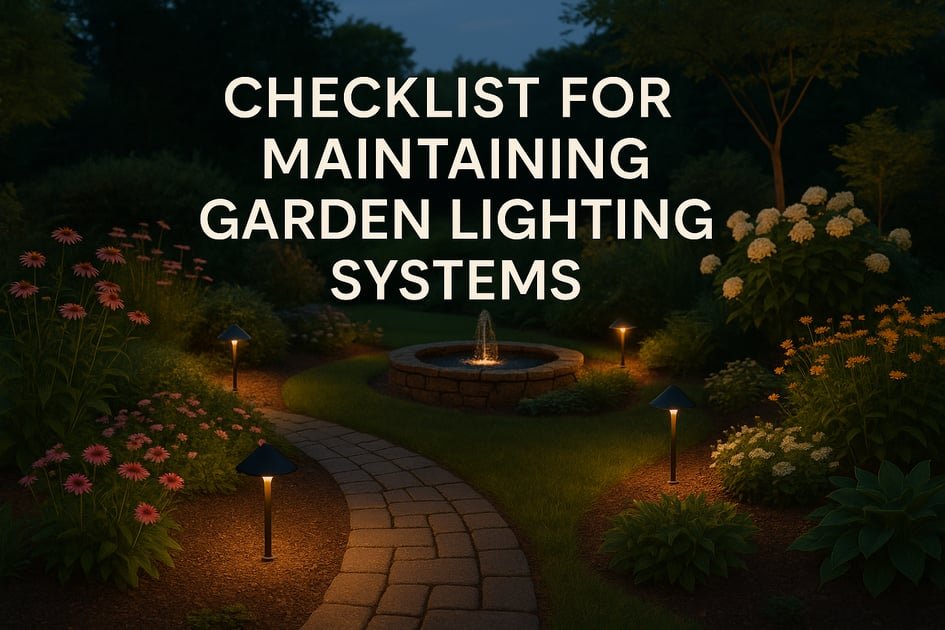
Maintaining your garden lighting system is essential for safety, aesthetics, and longevity. Here's a quick summary of what you need to do:
- Inspect Regularly: Check for damage, test lights for brightness and flickering, and trim plants blocking fixtures.
- Clean Fixtures: Remove dirt and cobwebs, clean light covers with mild soap, and ensure seals are intact to prevent moisture.
- Care for Power Components: Replace burned-out bulbs, inspect wiring, and check timers and transformers.
- Adjust Light Positions: Reposition lights seasonally to adapt to plant growth and changing daylight.
- Follow a Maintenance Schedule:
- Spring: Clean fixtures, inspect for winter damage, and update layout.
- Summer: Remove debris, clean solar panels, and check waterproof seals.
- Fall: Clear leaves, adjust timers, and winterize the system.
- Winter: Remove snow, monitor for moisture damage, and test timers.
Everything You Need To Know About Landscape Lighting ...

Basic System Check
Kick off your maintenance routine by thoroughly inspecting your garden lighting system. Regular inspections can help catch small issues before they turn into bigger, costlier problems. This step sets the stage for more focused cleaning and power system upkeep.
Check for Damage
Take a close look at your fixtures and wiring. Watch out for:
- Cracked housings that could let moisture in
- Loose connections where cables enter fixtures
- Exposed, frayed, or chewed wiring
- Signs of rust or corrosion
If you find any damage, fix it right away. Even one faulty fixture can impact the system's performance and safety.
Test the Lights
Wait until evening to check how your lights are performing. Pay attention to:
- Brightness: Each light should shine evenly without dimming
- Beam direction: Make sure lights are aimed where they should be
- Flickering: If you see flickering in LED lights, it could point to connection issues or a failing driver
Trim Overgrown Plants
Look around for any plants that might be blocking your lights or covering wires. Trim back any overgrowth to keep everything running smoothly. Once this is done, you’ll be ready to move on to cleaning and other maintenance tasks.
Regular Cleaning Steps
Keeping your fixtures clean helps them work better and last longer by avoiding issues like dimming and wear. Start by giving attention to the light covers for better performance.
Clean Light Covers
Begin by removing loose dirt and cobwebs with a soft brush. Then follow these steps:
- Mix warm water with a small amount of mild dish soap.
- Use a microfiber cloth to gently wipe the surface.
- Pay extra attention to areas that collect the most dirt.
- Rinse with clean water to remove any soap residue.
- Allow the fixtures to dry completely before reassembling.
Stay away from abrasive cleaners or rough materials, as these can cause scratches that let moisture in and reduce light efficiency.
Check Water Seals
Once the cleaning is done, inspect the water seals:
- Press gently around the edges to detect any cracks or signs of wear.
- Ensure no moisture has seeped in after recent rain or snow.
If the seals are damaged, replace them to keep water from causing harm.
Prevent Rust
Protect metal parts by applying a coating designed to prevent rust, and treat any rust spots as soon as they appear.
🚀 Ready to Reinvent Your Garden?
Join thousands of homeowners who have transformed their gardens using our AI design tool. Upload one photo to explore endless possibilities.
Get your AI garden designs →Power System Care
Once you've finished cleaning, shift your attention to the power components to keep the system running smoothly and safely.
Replace Burned-Out Bulbs
When swapping out a bulb, make sure it matches the fixture's voltage, wattage, and base type. Opt for LED bulbs - they’re energy-efficient and last longer. Always turn off the power and allow the fixture to cool before handling it.
Inspect Power Components
Check equipment like timer controls and transformers according to the manufacturer’s instructions to ensure they’re working as they should.
Repair Loose or Damaged Wires
Look over any visible wiring for signs of damage, such as frayed insulation or loose connections. Address these issues right away using weather-resistant materials and following proper electrical safety guidelines.
sbb-itb-4d6a8dd
Light Position Updates
Adjust Lights with the Seasons
As the seasons change, so do your garden's lighting needs. Every 3-4 months, take time to reposition your lights. This ensures they adapt to seasonal plant growth and shifts in natural light, keeping your garden evenly lit.
Expand with New Lights
When upgrading your lighting system, consider adding fixtures to pathways, key focal points, or secluded corners. This creates a layered lighting effect, enhancing the atmosphere. Be sure to check the Maintenance Timeline to seamlessly incorporate these updates into your regular upkeep.
Maintenance Timeline
Stick to this yearly maintenance schedule to keep your system in top shape:
| Season | Monthly Tasks | Quarterly Tasks | Annual Tasks |
|---|---|---|---|
| Spring (Mar-May) | • Clean light fixtures • Inspect for winter damage • Test all connections |
• Replace burnt-out bulbs • Adjust lighting angles for spring growth |
• Conduct a full system inspection • Update the lighting layout |
| Summer (Jun-Aug) | • Remove debris weekly • Clean solar panel surfaces • Check timer settings |
• Trim plants around fixtures • Test waterproof seals |
• Have a professional check the wiring • Replace aging transformers |
| Fall (Sep-Nov) | • Clear fallen leaves • Adjust timers for shorter days • Test motion sensors |
• Reposition lights for early darkness • Seal exposed wires |
• Winterize the system • Replace worn-out gaskets |
| Winter (Dec-Feb) | • Remove snow and ice buildup • Monitor for moisture damage • Verify timer accuracy |
• Test GFCIs • Clean fixture lenses |
• Replace damaged fixtures • Upgrade system components if needed |
Regular and Deep Maintenance Routines
In addition to seasonal tasks, incorporate these regular and deep maintenance routines to ensure everything runs smoothly.
Quick Maintenance Checks:
- Ensure consistent light output and brightness
- Clean lenses and covers
- Adjust timer settings for seasonal changes
- Clear debris around fixtures
- Inspect wiring for wear or damage
Quarterly Deep Maintenance:
- Thoroughly clean all fixtures and seals
- Replace weatherproof seals as needed
- Test GFCIs for proper functionality
- Adjust light positions to match seasonal needs
- Inspect and tighten all connections
Annual Maintenance Tips
Plan your annual maintenance in early spring (around March) as daylight hours start to increase. This is the perfect time to:
- Identify and document any winter damage
- Replace components showing wear or damage
- Update your lighting design for new garden features
- Schedule professional inspections if necessary
- Test and fine-tune all system controls
This yearly review complements the seasonal and routine tasks, ensuring your system stays reliable all year.
Conclusion
Keeping your garden lighting system in top shape requires a regular maintenance routine. Routine checks help you spot problems early, saving you from expensive repairs and ensuring your outdoor space remains well-lit and safe. By making these steps part of your schedule, you'll simplify maintenance and keep your system running smoothly. Stick to the outlined tips, and you can enjoy a functional and visually pleasing garden lighting setup for years to come.
🎨 Visualize Your Dream Garden Today!
Transform any outdoor space into a professional landscape design in minutes. Just upload a photo, choose your style, and let our AI do the rest.
Start your garden transformation now →FAQs
How often should I check and maintain my garden lighting system to keep it working efficiently?
To ensure your garden lighting system stays in excellent condition, it's a good idea to inspect and maintain it at least once every three to six months. Regular maintenance helps prevent issues like faulty wiring, burnt-out bulbs, or weather-related damage.
Here are some key tasks to include in your routine:
- Check for damaged or exposed wiring and repair it promptly to avoid safety hazards.
- Clean the fixtures to remove dirt, debris, or moisture that could affect light output.
- Replace any burnt-out bulbs and ensure all lights are functioning properly.
- Inspect connections and timers to confirm they’re operating as intended.
By staying consistent with these checks, you can extend the lifespan of your lighting system and keep your garden beautifully illuminated year-round.
What are the key signs of wear or damage to look for when inspecting garden lighting systems?
During regular inspections of your garden lighting system, keep an eye out for the following common signs of wear or damage:
- Flickering or dim lights: This could indicate a loose connection, faulty bulb, or issues with the wiring.
- Exposed or damaged wiring: Check for frayed or exposed wires, which can pose safety risks and affect performance.
- Corrosion on fixtures or connectors: Outdoor lighting is exposed to moisture, which can lead to rust or corrosion over time.
- Broken or cracked fixtures: Inspect for physical damage to light covers or fixtures that may reduce effectiveness or allow water to seep in.
- Unusual power consumption: A noticeable increase in energy use might signal inefficiencies or electrical problems.
Addressing these issues promptly can help maintain the longevity and performance of your garden lighting system. Regular maintenance ensures your outdoor space remains safe, functional, and beautifully illuminated year-round.
Can I handle all garden lighting maintenance myself, or are there tasks best left to a professional?
You can perform many garden lighting maintenance tasks yourself, such as cleaning fixtures, replacing bulbs, and checking for loose connections. These are straightforward and require minimal tools or expertise.
However, for more complex issues like electrical repairs, rewiring, or troubleshooting underground cables, it's safer and more effective to hire a licensed professional. They have the expertise to ensure your system is functioning properly and complies with safety standards. Regular maintenance, whether DIY or professional, will help keep your garden lighting system in top condition.
Related posts
Related Articles
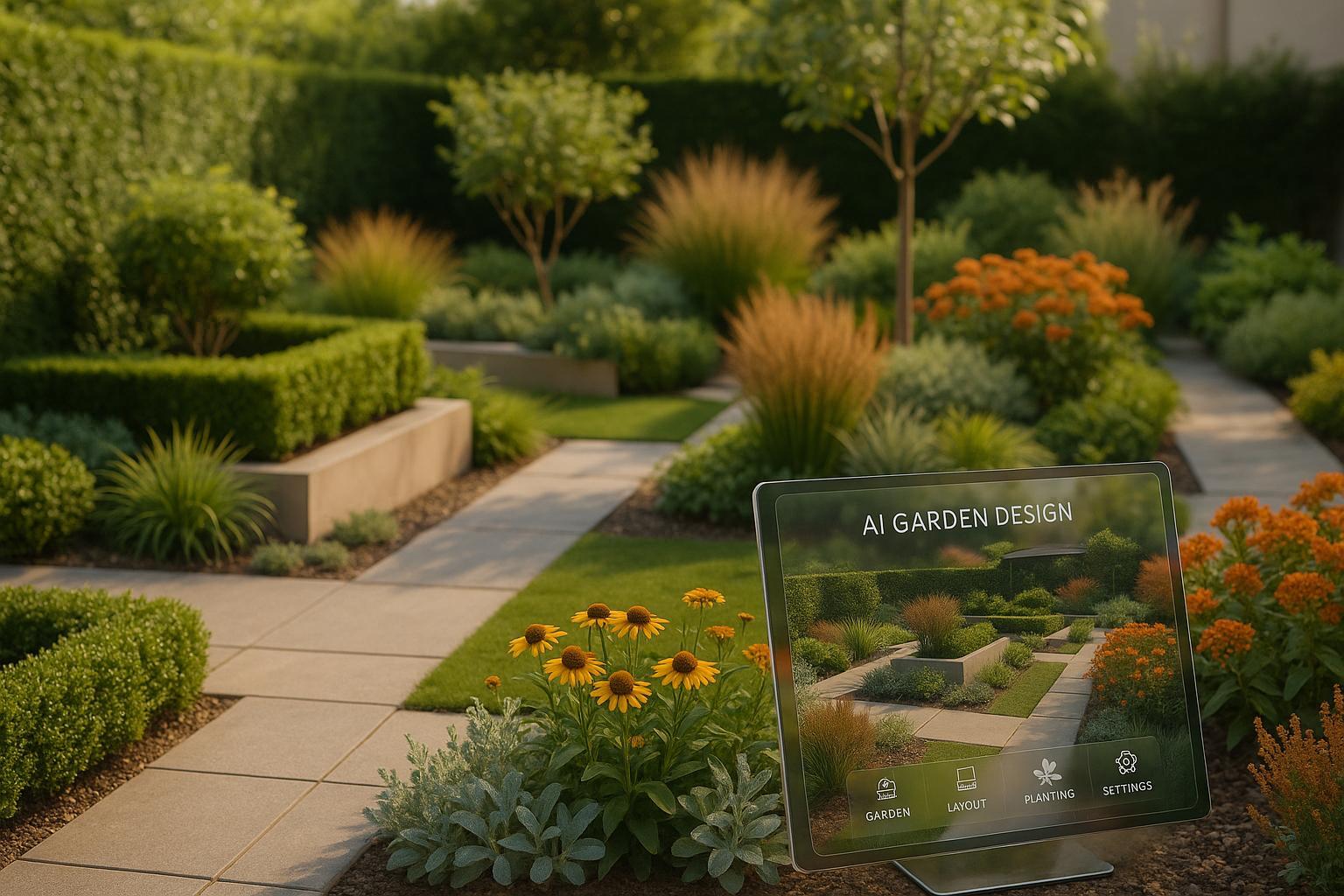
How AI Adjusts Garden Styles Instantly
Unlock the power of AI in garden design with instant customization, eco-friendly plant suggestions, and professional-quality layouts tailored to your space.
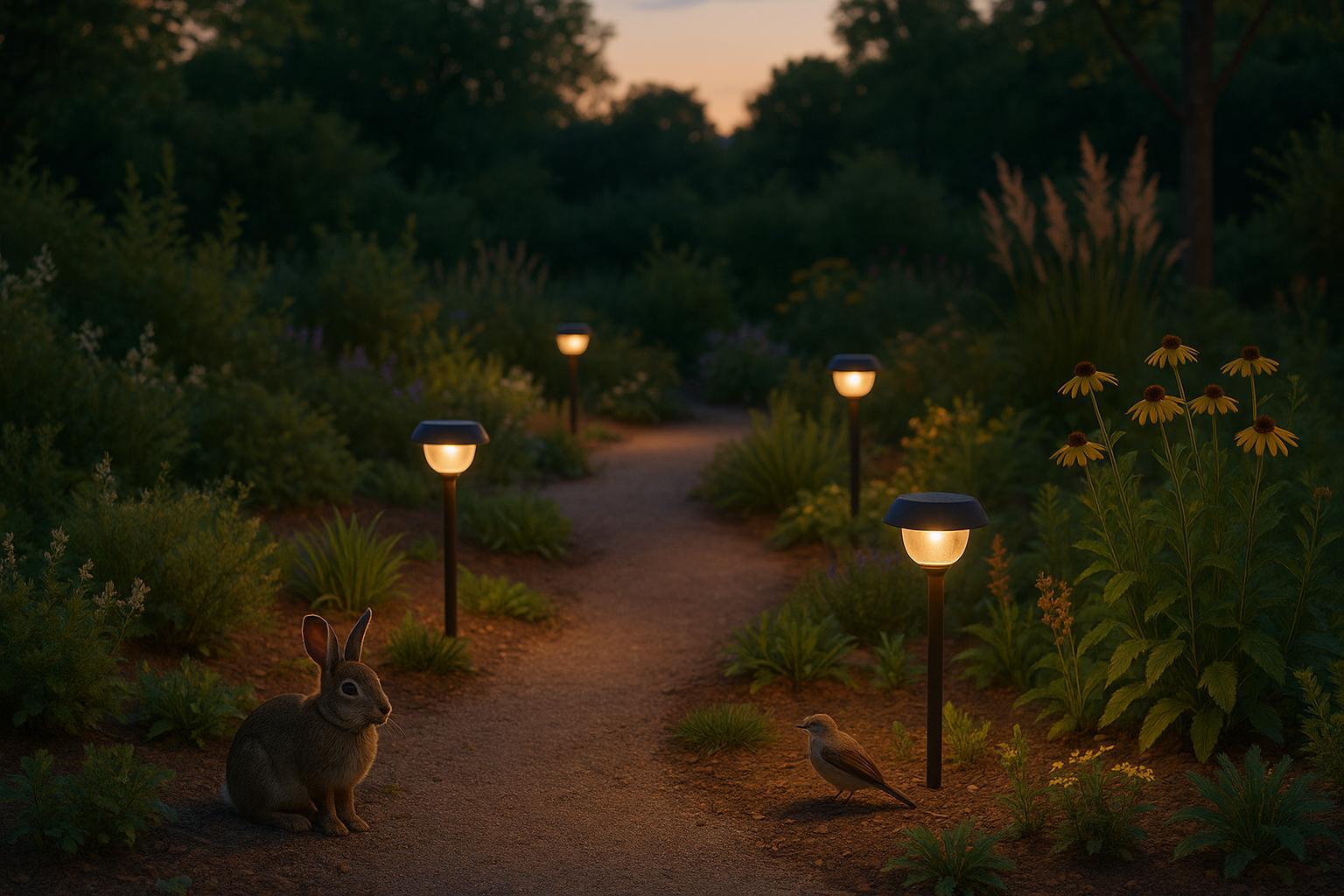
Solar Lighting and Wildlife-Friendly Gardens
Learn how solar lighting enhances garden beauty while protecting wildlife, minimizing light pollution, and supporting local ecosystems.
Elevate Your Outdoor Oasis: Creative Garden Art Ideas
Discover how to enhance your garden with art! Explore DIY garden art ideas, installation tips, and more to transform your outdoor space into a work of art.
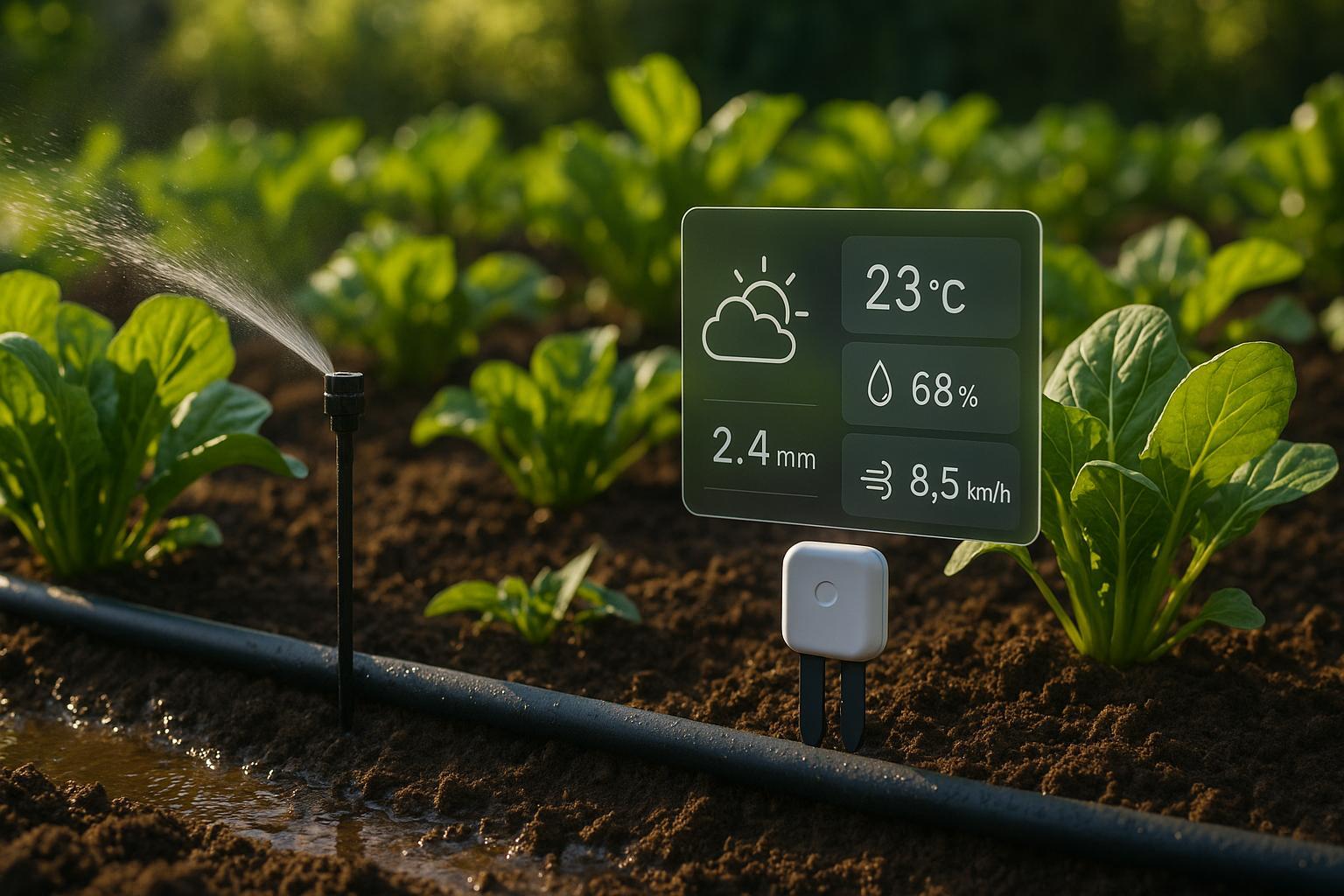
How AI Analyzes Irrigation System Compatibility
Explore how AI optimizes irrigation systems by analyzing soil, weather, and plant data, leading to efficient water use and healthier gardens.

How AI Matches Colors and Textures in Gardens
Explore how AI simplifies garden design by matching colors and textures, creating personalized layouts for thriving outdoor spaces.
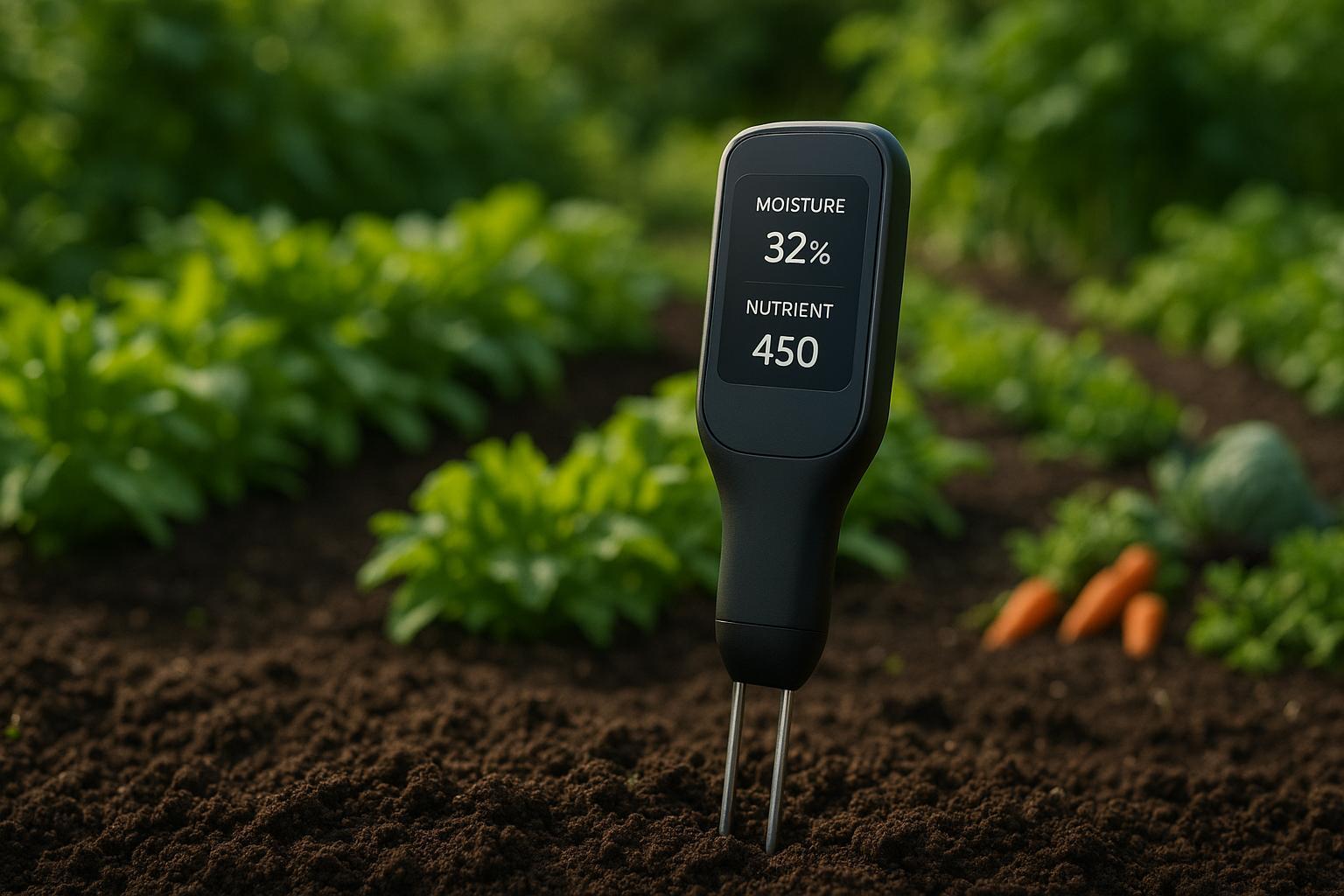
Top 7 Soil Sensors for Moisture and Nutrient Tracking
Explore the top soil sensors for monitoring moisture and nutrients, enhancing your gardening efficiency and plant health.